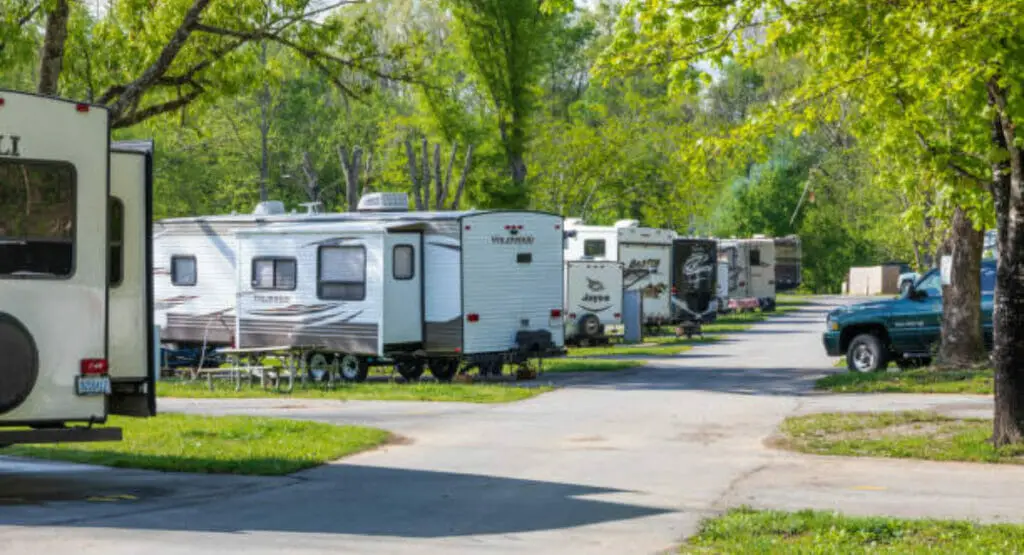In the world of RVing, inverters are critical components of the power system, especially during boondocking excursions where external power sources are limited. This article examines the significance of RV inverters and attempts to solve the mystery of how they charge the battery. These devices enable the smooth operation of household appliances and electronics on the road by converting DC power from the RV battery into usable AC power. Understanding the charging process, properly connecting the inverter to the battery, and using various charging modes and safety features can all help to improve battery performance. Discover the advantages of using an RV inverter to make boondocking more convenient and enjoyable.
I. What is an RV Inverter?
An RV inverter is a vital device that converts DC power, which is typically sourced from the RV battery, into AC power. This conversion is required to operate various household appliances and electronics in an RV while traveling. The inverter converts direct current (DC) to alternating current (AC), allowing RV owners to use their TVs, laptops, microwaves, and other AC-powered devices just like they would at home. RV inverters are a must-have for any RV enthusiast, especially during off-grid adventures or when external power sources are unavailable.
II. How Does an RV Inverter Charge the Battery?
Explain how the RV inverter charges the battery using the following subheadings:
1. DC to AC Conversion:
Explain the conversion process and how the inverter converts DC power to usable AC power for appliances.
2. Connecting the Inverter to the Battery:
Provide a step-by-step guide on how to connect the inverter to the RV battery safely and efficiently.
3. Charging Modes and Security Features:
Explain the various charging modes that RV inverters support, such as bulk charging, absorption charging, and float charging. Highlight the safety features that prevent overcharging and overheating of the battery.
III. Benefits of Using an RV Inverter for Battery Charging:
Using an RV inverter for battery charging offers a plethora of advantages:
1. Convenience:
RV owners can use an inverter to power up their household appliances and electronics while on the road, providing the comfort of a home-away-from-home experience.
2. Versatility:
The ability to convert DC to AC power enables the use of a wide range of electronic devices, enhancing the RV lifestyle and making it more enjoyable and functional.
2. Cost-effectiveness:
Owners can reduce their reliance on external power sources by using the RV’s battery power, saving money on campground fees and electricity costs.
3. Independence while boondocking:
When boondocking or camping in remote areas, an RV inverter ensures a continuous power supply, allowing for longer stays without the need for electrical hookups.
4. Emergency Preparedness:
In the event of a power outage or an emergency, an RV inverter provides a dependable backup power source, ensuring comfort and safety while on the road.
5. Quiet and Clean Power:
RV inverters generate electricity without making any noise or emitting any emissions, promoting a peaceful camping experience as well as environmental friendliness.
Finally, an RV inverter improves the overall RVing experience by providing convenience, versatility, cost savings, independence while boondocking, emergency preparedness, and eco-friendliness, making it a must-have component of any RV power system.
5. Tips for Efficient Battery Charging While Boondocking:
A successful off-grid adventure requires efficient battery charging while boondocking. Here are some helpful hints for RV owners:
1. Manage Power Consumption while using RV Inverter for Battery Charging:
Be mindful of power consumption by turning off lights, appliances, and electronics when not in use. Use LED bulbs that are energy efficient, and consider using propane-powered appliances instead of electric ones.
2. Monitor Battery Levels:
Using a battery monitor or a voltmeter, keep a close eye on the battery levels in your RV. This prevents the battery from being overcharged, which can cause damage and shorten its lifespan.
3. Use Solar Panels:
Invest in solar panels to harness the sun’s energy and charge your batteries during the day. While boondocking, solar power is a clean and sustainable way to keep your batteries charged.
4. Use Generator Sparingly:
If your RV is equipped with a generator, use it judiciously. Run the generator during off-peak hours or when necessary to conserve fuel and minimize noise pollution.
5. Prioritize Charging:
When charging multiple devices or appliances, prioritize the ones that are essential or have higher power demands. This ensures that critical items receive power first and reduces battery strain.
6. Consider Battery Banks:
Installing multiple batteries in a battery bank increases storage capacity, allowing you to stay off-grid for longer periods of time without needing to recharge.
7. Limit High-Power Appliances:
Avoid using power-hungry appliances at the same time, as this may exceed the inverter’s capacity and quickly drain the battery. When possible, choose low-power alternatives.
8. Battery Maintenance:
Inspect and maintain your RV‘s batteries on a regular basis, checking for corrosion and ensuring proper connections. To maximize charging efficiency, keep terminals clean and batteries in good condition.
9. Utilize Energy-Saving Settings:
Change the settings on your electronic devices to reduce power consumption. Reduce the brightness of laptop and tablet screens, and enable power-saving modes on smartphones.
10. Plan Charging Times:
If possible, schedule your battery charging during peak sunlight hours for solar panels or when the generator is running to maximize charging efficiency.
By following these guidelines, RV owners can maximize their battery capacity, extend their boondocking experience, and enjoy the beauty of nature without worrying about power outages.
Conclusion:
Understanding how an RV inverter charges the battery is critical for any RV enthusiast, especially during off-grid adventures. RV owners can ensure their batteries remain charged and ready to support their journeys by following the right steps and employing efficient charging practices. With the proper use of RV inverters and smart battery charging strategies, boondocking can be worry-free.



